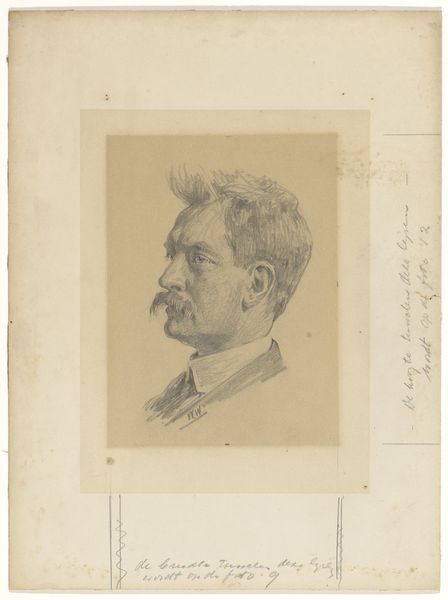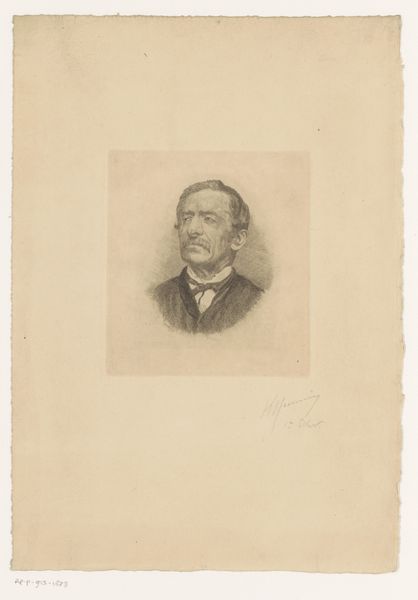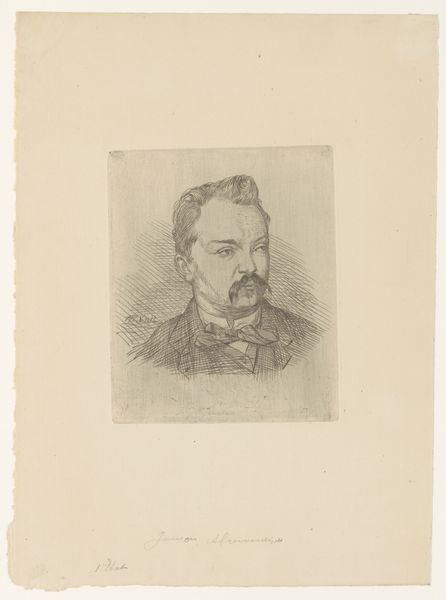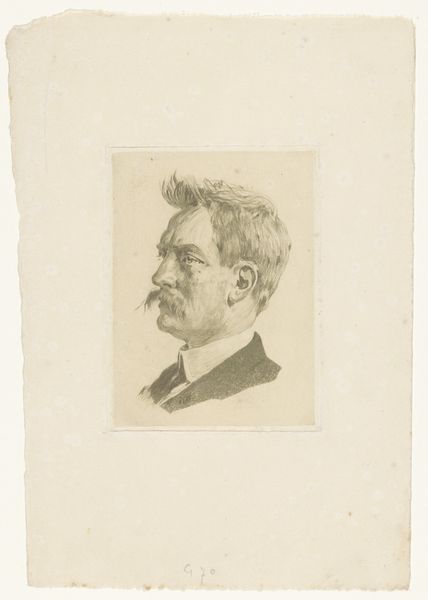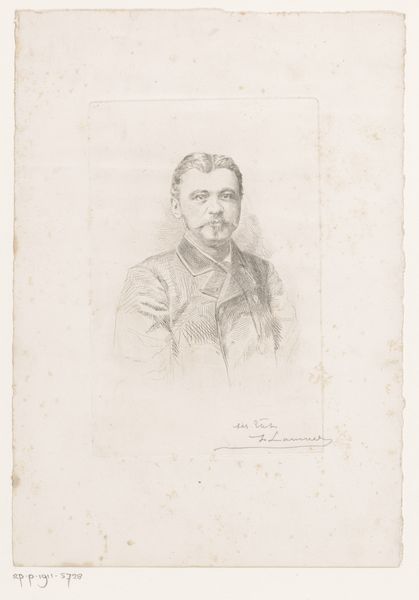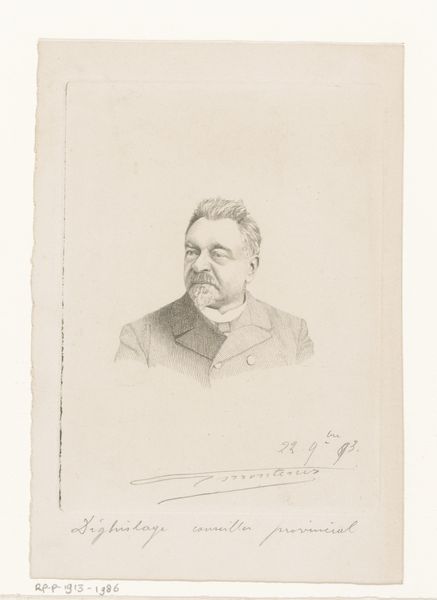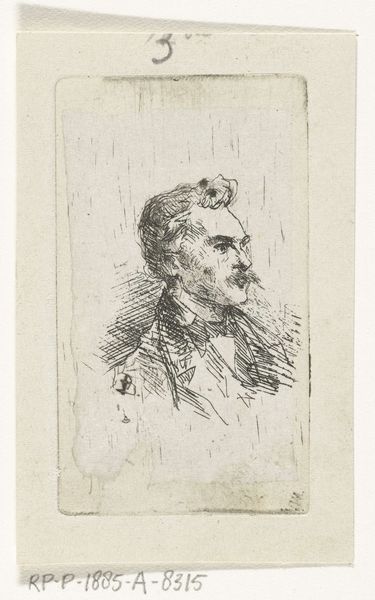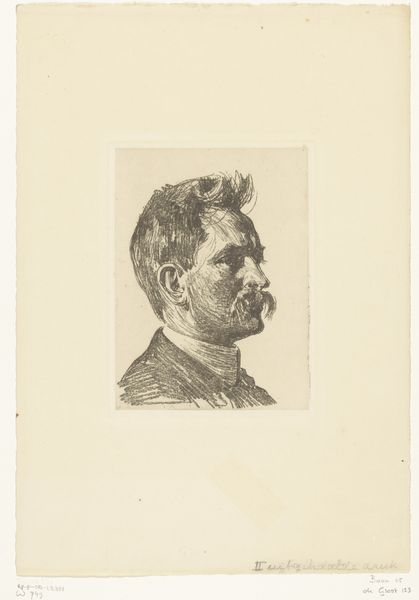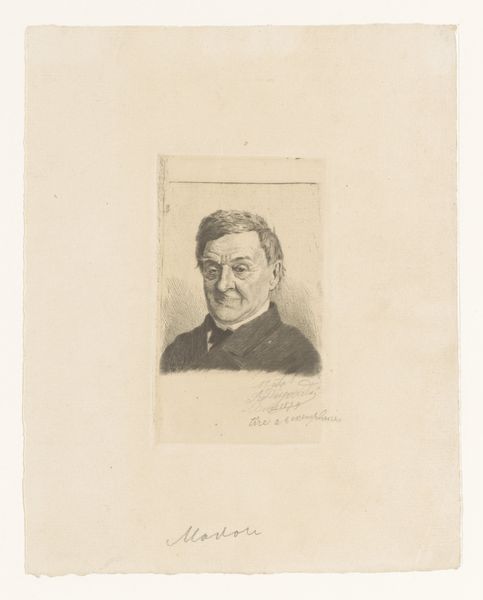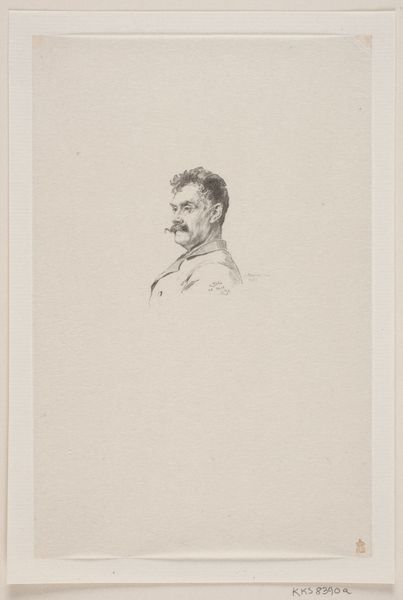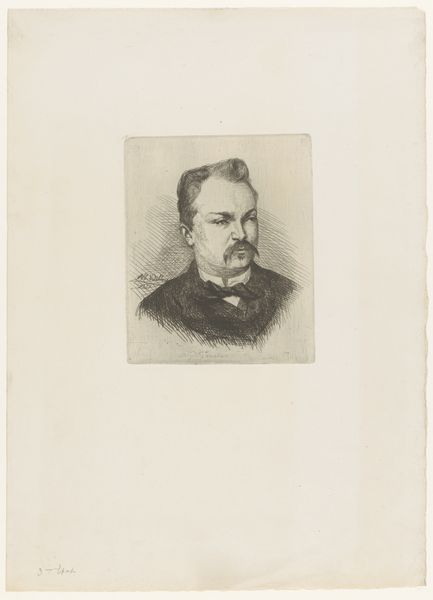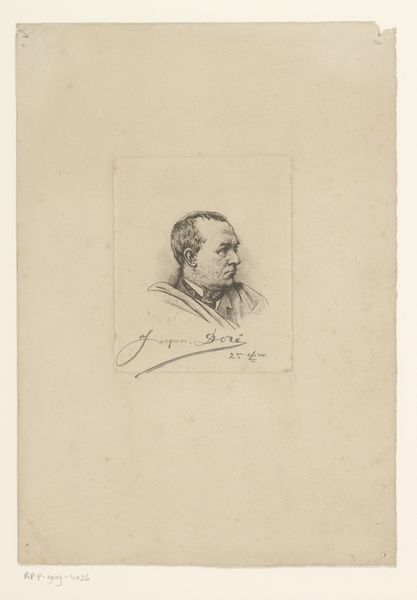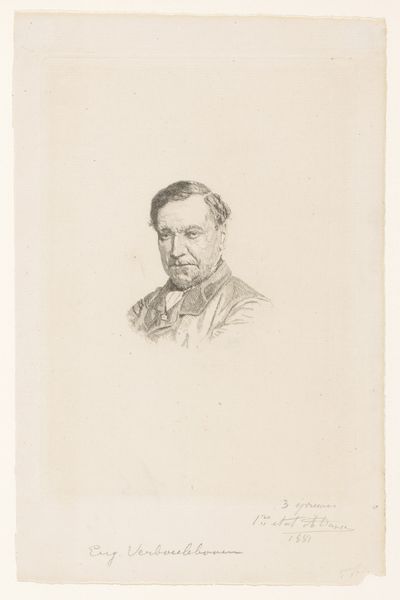
drawing, pencil
#
portrait
#
pencil drawn
#
drawing
#
dutch-golden-age
#
pencil sketch
#
pencil
#
pencil work
#
realism
Dimensions: height 303 mm, width 228 mm
Copyright: Rijks Museum: Open Domain
Curator: Looking at this work, I’m struck by its directness; there’s a sort of vulnerability in its unfinished quality. Editor: This is a portrait of Jan Hofker by Willem Witsen, rendered in pencil sometime between 1870 and 1923. What's remarkable to me is the intense, almost iconic, representation achieved through such simple means. The starkness accentuates his features. Curator: I agree, it’s all very present. Hofker seems caught mid-thought, or perhaps, mid-sentence. The choice of pencil lends itself well to such intimacy. I wonder what position Hofker occupied within Witsen’s circle? And within a broader social frame—who was given the luxury of having their likeness captured in such a medium? Editor: He certainly possesses an air of someone accustomed to having his presence noted. Look at the assertive lines that define the mustache, almost a visual shorthand for power and authority in that era. But it is, simultaneously, an extremely personal image. We might see a link between the pencil portrait and the rise of photography in the late 19th, early 20th centuries—this being another, arguably more personalized and detailed way of capturing likeness. Curator: Definitely. Photography complicated and democratized portraiture; pencil drawings, like this one, occupy a unique, somewhat liminal space. The sitter has a palpable class status; what social cues point to Hofker’s position within Dutch society? And did that standing also impact Witsen's rendering choices? Editor: Note the minimal but precise depiction of the collar, the subtle indications of fine tailoring. It points towards a specific bourgeois identity. Also, the portrait in profile carries its own symbolic weight, doesn't it? It's reminiscent of classical portraiture. And this style has links to historical archetypes of leaders or intellectuals. Curator: Precisely. The conscious echoing of such symbols, even in what might appear a simple sketch, speaks volumes about the conscious cultivation of identity during that time. It makes me reflect on contemporary social portrayals; who dictates what kind of visages we now consider noteworthy or admirable, and what artistic approaches shape that narrative? Editor: It does open an important dialog on what qualities or personas that we still visually elevate through image. Thank you. Curator: Thank you for providing fresh perspectives.
Comments
No comments
Be the first to comment and join the conversation on the ultimate creative platform.
